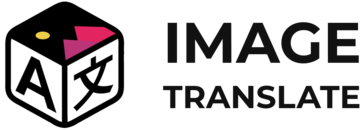Top Other Translation Softwares
In the diverse landscape of translation, Other Translation software offers unique tools tailored for specific needs. These platforms provide specialized services, covering niche languages or industries often overlooked by mainstream solutions. Unlike traditional options, they may focus on rare dialects, industry-specific terminologies, or integrate innovative technologies for precise translation r... Read More
10 companies found
ImageTranslate
Product Description
ImageTranslate is a handy tool for businesses and individuals looking to communicate globally with ease. It allows users to translate text directly within images, making it a great fit for anyone working with visually-rich content like infographics, presentations, posters, or social media graphics. What sets ImageTranslate apart is its focus on simplicity and user-friendliness. There's no need to... Read More
Users
- • No Data
Industries
- • No Data
Market Segment
- • No Data
Product Description
Reverso is a straightforward and efficient language tool designed to make translation and learning new languages easier for everyone. If you ever find yourself struggling with understanding foreign texts or wanting a quick and reliable translation, Reverso has you covered. This software goes beyond just translating words and phrases, as it also provides context to ensure the translations are accur... Read More
Users
- • No Data
Industries
- • No Data
Market Segment
- • No Data
ContentQuo
Product Description
ContentQuo is a savvy tool crafted specifically for businesses that need reliable and efficient translations. Designed with busy professionals in mind, it removes the headaches commonly associated with managing various translation tasks. If you find that coordinating translations is becoming a juggled act, ContentQuo steps in to simplify the process, making it more streamlined and manageable. At ... Read More
Users
- • No Data
Industries
- • No Data
Market Segment
- • No Data
Product Description
MultiTerm is designed to simplify how organizations manage their terminology, ensuring everyone uses the right terms consistently across all communications. Understanding that businesses often struggle with maintaining a unified use of language, MultiTerm provides a straightforward solution to keep teams on the same page. Imagine a scenario where different departments or team members use varying ... Read More
Users
- • No Data
Industries
- • No Data
Market Segment
- • No Data
Berba Translations
Product Description
Berba Translations is a software solution designed to make accurate and reliable translations accessible and user-friendly for businesses of all sizes. This platform harnesses the power of cutting-edge technology and a vast network of skilled linguists to facilitate smooth and effective communication across different languages. One of the key benefits of Berba Translations is its user-centric des... Read More
Users
- • No Data
Industries
- • No Data
Market Segment
- • No Data
AITranslator.com
Product Description
AITranslator.com is a tool designed to help businesses with their translation needs. It provides an easier way for companies to communicate with customers, partners, and team members who speak different languages. By using our software, businesses can quickly and accurately translate documents, emails, websites, and other types of content. Our software is designed to be user-friendly. You don't n... Read More
Users
- • No Data
Industries
- • No Data
Market Segment
- • No Data
Product Description
WPML, short for WordPress Multilingual, is a powerful and user-friendly tool designed specifically for businesses looking to expand their reach by translating their WordPress websites into multiple languages. Whether your audience is local or spans across different countries, WPML helps ensure that your content is accessible and understandable for everyone. One of the main advantages of WPML is i... Read More
Users
- • No Data
Industries
- • No Data
Market Segment
- • No Data
InstaGlot for Google Sheets
Product Description
InstaGlot for Google Sheets is a straightforward and user-friendly add-on designed to make translations within spreadsheets a breeze. If you often find yourself struggling to translate content in your Google Sheets or spending too much time on manual translations, InstaGlot can make your life easier. This handy tool allows you to translate text across different languages directly within your spr... Read More
Users
- • No Data
Industries
- • No Data
Market Segment
- • No Data
RTranslator
Product Description
RTranslator is a software solution designed to make communication across different languages seamless and efficient. Whether you're managing an international business, collaborating with overseas teams, or simply engaging with clients around the globe, RTranslator helps break down language barriers. The software offers real-time translation across a wide range of languages, making it easy to unde... Read More
Users
- • No Data
Industries
- • No Data
Market Segment
- • No Data
GitTranslate
Product Description
GitTranslate is designed to bridge the gap between software development and global collaboration by offering seamless translation solutions directly within your Git workflow. Recognizing the challenges of working in a multilingual team, this tool aims to simplify the process of translating code, documentation, and other project files without disrupting your development process. At its core, GitTr... Read More
Users
- • No Data
Industries
- • No Data
Market Segment
- • No Data
What features should I look for in translation software?
When selecting Other Translation software, consider essential features to ensure it meets your needs:
Language Support
A primary feature to evaluate is the range of languages the software supports. Diverse language options are crucial for businesses or individuals needing to translate materials for international audiences. This flexibility is foundational in Other Translation software, enabling access to broader markets.
Accuracy of Translation
Assess the accuracy of the translations. Effective Other Translation software should guarantee high translation fidelity with minimal errors. Ensure it employs advanced linguistic algorithms or AI-driven models that can understand context, idioms, and nuances of different languages.
User-Friendly Interface
The software should have an intuitive and straightforward interface. This ease of use minimizes the learning curve, thus making it accessible to everyone, regardless of their technical expertise. User-friendly interfaces in Other Translation software can enhance productivity and streamline the translation process.
Integration Capabilities
Consider integration with other tools or platforms. Other Translation software with robust integration options allows seamless data transfer between different systems such as content management systems (CMS), customer relationship management (CRM) tools, or e-commerce platforms.
Customization Options
Customization options are crucial. Look for software that allows users to tailor translation processes to specific needs, such as adding specialized terminologies or glossaries. Other Translation software should enable this level of customization to accommodate industry-specific language requirements.
Collaboration Features
For teams working on translations, collaboration features are vital. These might include sharing capabilities, version control, and real-time edits. Choose Other Translation software that supports team-based workflows to enhance cooperation and efficiency in the translation process.
Machine and Human Translation
Some software offers a blend of machine and human translation. Automatic translation is quick but may lack nuance. Including human editing ensures accuracy and quality. Look for Other Translation software that provides options for human intervention when necessary to review and refine translations.
Security and Compliance
Security is a significant concern when dealing with sensitive data. Choose translation software that prioritizes data security through encryption, secure hosting, and compliance with international standards like GDPR for the protection of personal data.
Scalability
Evaluate scalability if you anticipate growing translation needs. Other Translation software should adapt to increased demand without a drop in performance or accuracy. Scalable solutions prevent the need for constant software changes as translation volumes grow.
Customer Support
Finally, reliable customer support is indispensable. Check if the software provides timely and effective support options such as live chat, email, or phone assistance. When using Other Translation software, responsive support ensures swift resolution of any issues, minimizing disruptions to your workflow.
Cost Efficiency
Consider cost efficiency in relation to features offered. Evaluate if the pricing matches the range of capabilities you receive. Effective Other Translation software should balance between cost and features, providing good value for your investment.
How does translation software improve communication across languages?
Overcomes Language Barriers
Other Translation software plays a crucial role in overcoming language barriers by allowing seamless communication between individuals who speak different languages. It does this through sophisticated algorithms and extensive language databases, which facilitate the translation of text or speech from one language to another. By automatically converting languages, these tools make information accessible across linguistic boundaries, thus promoting mutual understanding.
Enhances Accessibility
The accessibility and inclusivity of global content are significantly enhanced by Other Translation software. Organizations can efficiently translate their digital resources, such as websites, documents, and applications, to cater to non-native speakers. By providing multilingual support, these tools make information readily available to a broader audience, ensuring that language does not restrict access to critical information.
Supports Real-Time Communication
In real-time communication scenarios, Other Translation software provides immediate translation of dialogue or text, which is instrumental in settings like multinational meetings, customer service, and social interactions. This real-time capability ensures conversations can progress smoothly without lengthy delays, enabling participants to exchange ideas and information seamlessly.
Consistency and Accuracy
Other Translation software helps maintain consistency and accuracy in communication. By employing advanced machine learning models, these tools produce translations that adhere to the contextual and linguistic nuances of the original text. This level of precision ensures that the intended meaning is preserved and accurately conveyed, reducing the risk of misunderstandings.
Facilitates Multinational Collaboration
Other Translation software plays a pivotal role in facilitating collaboration across multinational teams. In today's global work environment, team members often come from various linguistic backgrounds. Translation tools enable these diverse teams to share documents, communicate effectively, and coordinate tasks without language being an impediment. This streamlined communication fosters a more inclusive and productive work environment.
Cost and Time Efficiency
Utilizing Other Translation software is a cost-effective and time-efficient solution compared to traditional translation methods. These tools can process large volumes of text rapidly, eliminating the need for extended translation timelines. By reducing reliance on human translators for every task, organizations can allocate resources more strategically while still achieving high-quality translations.
Personalization and Learning
Through continuous improvements in artificial intelligence and machine learning, Other Translation software is increasingly capable of personalizing translations based on user input and historical data. This adaptability allows the software to learn from previous interactions, enhancing the quality and relevance of future translations. Personalized translations can significantly improve the end-user experience by offering customized solutions that cater to individual preferences and communication styles.
Promotes Cultural Exchange
By breaking down linguistic barriers, Other Translation software encourages cultural exchange and understanding. When language is no longer a constraint, it becomes easier for individuals and organizations to explore, share, and learn from different cultures. This cultural engagement enriches perspectives and fosters a sense of global community.
In essence, Other Translation software is instrumental in bridging language gaps, making communication more efficient, inclusive, and effective across different languages. As technology continues to advance, these tools will play an increasingly vital role in facilitating global communication and understanding.
## Can translation software handle multiple languages simultaneously?
#### Capability of Handling Multiple Languages
Other Translation software is designed to facilitate language translation across various contexts. One significant feature is the ability to manage multiple languages concurrently. This means users can translate content from one language to another without manually switching the primary language settings each time. This capability is crucial for businesses or individuals who need to translate content for diverse audiences.
#### How It Works
The process generally involves selecting the source language and the desired target languages. Many tools in the category of Other Translation software support this by providing an interface where users can add multiple target languages. When content is translated, the software can display results in multiple languages simultaneously, allowing for straightforward comparison and verification.
#### Benefits of Multiple Language Translation
Handling multiple languages simultaneously can save time and reduce errors. Users do not need to repeat the translation process for each language separately, as Other Translation software can automate this task. This efficiency is significant in environments where time is of the essence, such as international customer support or emergency services.
Furthermore, the software's ability to provide real-time translations into several languages can improve communication in multilingual settings. It allows stakeholders from different linguistic backgrounds to collaborate effectively without language being a barrier. This feature of Other Translation software has become particularly valuable in global business, education, and diplomatic exchanges.
#### Considerations
However, while Other Translation software can support simultaneous multi-language processing, the quality of translation can vary. Automatic translations may not always be accurate due to linguistic nuances and cultural contexts. Understanding the limitations is essential in deciding whether to rely solely on machine translations or seek human verification for critical content.
#### Application Scenarios
Various sectors benefit from the simultaneous multi-language capabilities of Other Translation software:
- **E-commerce:** Businesses can translate product descriptions and customer service interactions in multiple languages to cater to a global customer base.
- **Healthcare:** Multilingual translations can aid in communicating complex medical information to diverse patient groups.
- **Education:** Educational institutions can offer resources in different languages, making learning accessible to a broader audience.
- **Travel and Hospitality:** Multilingual translations can enhance guest experiences by providing information and services in their native languages.
#### Technological Advancements
Advancements in natural language processing and artificial intelligence have improved the accuracy and efficiency of simultaneous multi-language translation. Other Translation software often employs machine learning algorithms to learn from corrections, thereby enhancing future translations. Researchers continue to develop methodologies that improve semantic understanding across different languages, addressing challenges associated with idiomatic expressions and contextual interpretations.
Ultimately, while Other Translation software can handle multiple languages simultaneously, it is essential to understand its scope and limitations. Users should remain vigilant about checking the accuracy of translations, particularly in formal or sensitive communications. The ability to manage multilingual translations efficiently makes Other Translation software a valuable tool in today’s interconnected world.
What are the benefits of using translation software for businesses?
Cost Efficiency
One of the primary advantages of using Other Translation software is the reduction in translation costs. Businesses save money on hiring human translators for every document or content update. This cost efficiency can be particularly beneficial for small to medium-sized businesses looking to expand their reach globally with limited resources. With translation software, businesses can allocate their budget to other critical areas while maintaining accurate translations.
Speed and Time Efficiency
Translation software significantly accelerates the translation process. The ability to produce translations quickly means businesses can promptly launch products, campaigns, or communications in multiple languages. This is especially crucial for industries where time-to-market is a competitive advantage. Other Translation software helps businesses stay agile and responsive in an ever-changing market.
Consistency and Accuracy
Maintaining a consistent brand voice across different languages can be challenging. Translation software provides businesses with tools to ensure consistent terminology and phrasing. Glossaries, translation memories, and other features reduce the risk of inconsistent messaging. This ensures that brand identity is uniform, no matter the language.
Improved Communication
Other Translation software enhances communication with international clients, partners, and employees. By breaking down language barriers, businesses can foster better relationships and strengthen their global presence. Accurate and quick translation of contracts, emails, and other communication materials ensures no misunderstanding occurs in cross-border dealings.
Scalability
As businesses expand, the volume of content that needs translation grows. Using translation software allows for scaling up operations without proportionally increasing translation costs. Translation software can efficiently handle large projects, enabling businesses to translate more content without sacrificing quality or speed.
Integration with Existing Systems
Many translation software solutions integrate seamlessly with other platforms such as content management systems, customer relationship management tools, or marketing platforms. This integration streamlines workflows and reduces the manual effort required to transfer content for translation. Thus, translation becomes a more fluid part of the business operation rather than a separate function.
Access to Global Markets
By using Other Translation software, businesses can access new markets that speak different languages. Localizing content to match cultural nuances and linguistic preferences allows businesses to connect with a broader audience. This can lead to increased sales, market share, and brand recognition in regions that were previously unreachable.
Enhanced Customer Experience
Offering content and support in a customer’s native language improves their experience and satisfaction. Translation software ensures that customers receive clear instructions, product information, and support, reducing friction in their journey. This enhanced experience can lead to better customer retention and positive word-of-mouth.
Data Security
Certain translation software offers robust data security features to protect sensitive information during the translation process. Businesses handling confidential material can benefit from secure translation environments that ensure their data stays protected against breaches.
Using Other Translation software provides businesses with a strategic advantage by enabling efficient, accurate, and consistent communication in multiple languages, thereby broadening their global outreach and enhancing operational efficiency.
How Accurate is Translation Software Compared to Human Translators?
Overview of Translation Software Accuracy
In examining the accuracy of Other Translation software versus human translators, it's clear that translation software has made significant strides. However, various factors determine its accuracy, including language complexity, context, and nuances.
Linguistic Complexity
Other Translation software often struggles with complex linguistic aspects. These include idiomatic expressions, cultural nuances, and contextual meanings. While these algorithms manage straightforward text effectively, they can misinterpret more complicated language constructs. Human translators, conversely, excel at understanding subtext and cultural references.
Context and Nuance
A major challenge for Other Translation software lies in grasping context and nuance. Algorithms may translate words literally, missing the intended meaning. For example, metaphors can often become distorted when processed by machines. Human translators, by contrast, are adept at preserving the intended tone and cultural context.
Processing Speed vs. Quality
While Other Translation software provides rapid translation, often in real-time, this speed may come at the expense of quality. Machines handle large volumes of text quickly but can introduce errors in subtle language aspects. Human translators, though slower, offer greater precision and consistency, ensuring translations retain the original message's intent.
Advances in Machine Learning
Recent advancements in machine learning have enhanced some capabilities of Other Translation software. Features like neural networks and natural language processing models have improved language understanding. Yet, these systems can still falter in cases of slang or dialects unfamiliar to their training data.
Vocabulary and Technical Terminology
Translation software has shown proficiency in handling technical terminology and industry-specific language. Its vast database allows it to recognize complex terms. However, without regular updates and specialized training, these systems may lag behind developments in niche vocabularies. Humans can adapt more swiftly to emerging terminologies and language trends.
Error Propagation
Errors in Other Translation software can accumulate, especially when translating large documents or multiple languages. Misinterpretations can propagate through the text, affecting overall accuracy. Human translators are capable of identifying and correcting errors in real-time, preserving translation fidelity.
Hybrid Approaches
A common solution combines human expertise with Other Translation software. This hybrid approach leverages the speed of machines while incorporating human insight for context and quality assurance. By doing so, one can harness the strengths of both translator types.
Cultural Sensitivity
Cultural sensitivity remains a prominent area where Other Translation software lacks compared to human translators. Machines can inadvertently produce translations that do not consider cultural sensitivities or offensive language. Human translators bring a level of awareness and adaptation to cultural nuances that algorithms struggle to replicate.
In conclusion, while Other Translation software offers notable advantages in speed and volume, human translators maintain a superior edge in accuracy, especially in linguistically complex scenarios. The decision between utilizing software or human translation often depends on the specific needs for precision, context understanding, and cultural awareness.
Is Translation Software Suitable for Professional Document Translation?
Understanding Other Translation Software
Other Translation software encompasses tools that automate the translation process for a variety of content types. These tools use advanced algorithms and machine learning techniques to convert text from one language to another. They cater to different users, including casual users, businesses, and professional translators. Their design principles focus on efficiency and scalability, offering users the ability to manage large volumes of text across multiple languages.
Suitability for Professional Document Translation
Other Translation software can be used for professional document translation, but suitability greatly depends on the context and quality requirements. These tools generally offer features such as language detection, translation memory, and glossaries that assist translators in maintaining consistency and accuracy across documents.
Accuracy and Reliability
-
Machine Translation Challenges: While machine translation has improved, it often lacks context and nuance, leading to potential errors. Professional documents require high precision, especially those involving technical or legal content. Here, Other Translation software may require human oversight to ensure accuracy.
-
Quality Control Measures: Some software includes quality assurance features that flag errors or inconsistencies. These features benefit users by providing an extra layer of checking, which is crucial for professional document standards.
Advantages of Using Translation Software
Speed and Efficiency
Other Translation software speeds up the translation process by automatically handling large text volumes. This efficiency can be beneficial for professionals who manage tight deadlines. By reducing the time spent on manual translation, professionals can focus on quality assurance and client interaction.
Cost-Effectiveness
Utilizing Other Translation software reduces costs associated with manual translation tasks. For businesses, this translates to budget optimization, allowing resources to be allocated to other vital areas, such as customer service or product development.
Language Pair Coverage
These tools often support a wide range of language pairs, which is essential for businesses operating internationally. The ability to translate documents into numerous languages expands market reach and facilitates global communication.
Limitations in Professional Contexts
Complex Syntax and Specialized Terminology
Professional documents often contain sophisticated terminology that requires expert knowledge. Other Translation software may not always capture the correct meaning or context, especially if the text includes idiomatic expressions or industry-specific jargon.
Cultural Nuances and Tone
Machine translations might miss critical cultural subtleties and emotional tones present in the source text. Professional documents often require these elements to be conveyed accurately to maintain the integrity and intended impact of the document.
Human Intervention Necessity
For critical and sensitive material, it is advisable to involve human translators to review and edit the output from Other Translation software. This ensures that the translation is not only correct but also meets the specific standards and objectives of the intended audience.
In professional contexts, Other Translation software can act as a supportive tool. However, it should be combined with human expertise to achieve the desired quality and precision required for professional document translation.
What factors affect the pricing of translation software?
When considering the pricing of Other Translation software, several key factors come into play. Understanding these elements can guide users in selecting the right solution for their needs while staying within budget constraints.
Features and Functionality
The breadth and depth of features offered by a translation tool often dictate its pricing. Advanced features may include automated translation, integration capabilities with other platforms, support for numerous languages, and additional tools for managing translation projects. Basic tools with fewer features are generally priced lower than comprehensive solutions offering extensive functionality.
Subscription Model
Other Translation software often follows a subscription-based pricing model. These can range from monthly to annual subscriptions. Pricing can differ significantly based on the duration, with annual subscriptions offering cost savings over monthly payments. The specifics of the subscription model, such as user limits and access to updates, also influence the price.
Scalability
Scalability is a critical factor for organizations expecting growth. Some translation platforms offer flexible pricing tiers that increase with usage or the number of users. Companies should consider their future needs when assessing these scalable pricing models, as it may lead to higher costs in the long term.
Type of Users
Translation software pricing can vary depending on whether it targets individual users, small teams, or large enterprises. Solutions designed for larger organizations often provide more sophisticated analytics, greater integration capabilities, and premium support services, which are reflected in higher prices. For individual or freelance translators, prices tend to be lower because of limited access to these enterprise-level features.
Language Support
The number of languages supported by the software also impacts its cost. More comprehensive language support usually requires additional resources and development effort, which can increase the price. Specialized translation requirements, such as technical jargon or industry-specific terminology, may also incur extra charges.
Customer Support and Service
Levels of customer support and service offered by translation software providers play a critical role in their pricing. Higher-priced tiers often include premium support options like 24/7 assistance, dedicated account managers, or enhanced training resources. The availability of comprehensive support can be indispensable, particularly for businesses relying heavily on Other Translation software.
Integration Capabilities
Translation software that can seamlessly integrate with a wide array of other tools and platforms, such as content management systems, localization tools, or marketing platforms, may come at a premium. This integration capability is often vital for organizations that require a smooth workflow across various applications.
Customization Options
Some organizations may need software that can be tailored to their unique workflows, branding, or infrastructure. The possibility of customizing the translation software can lead to higher costs, depending on the extent and complexity of the changes required.
These factors collectively influence the pricing structure of Other Translation software, affecting how users evaluate different solutions relative to their specific needs and budgets. Understanding these elements can facilitate making informed decisions in selecting the best translation software.









